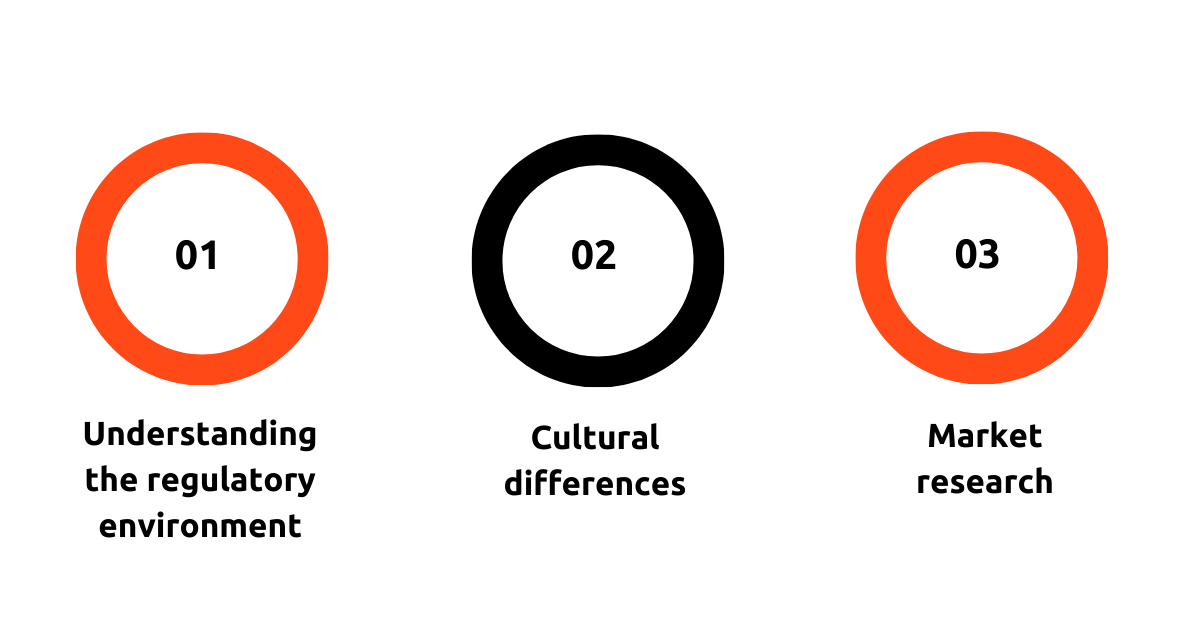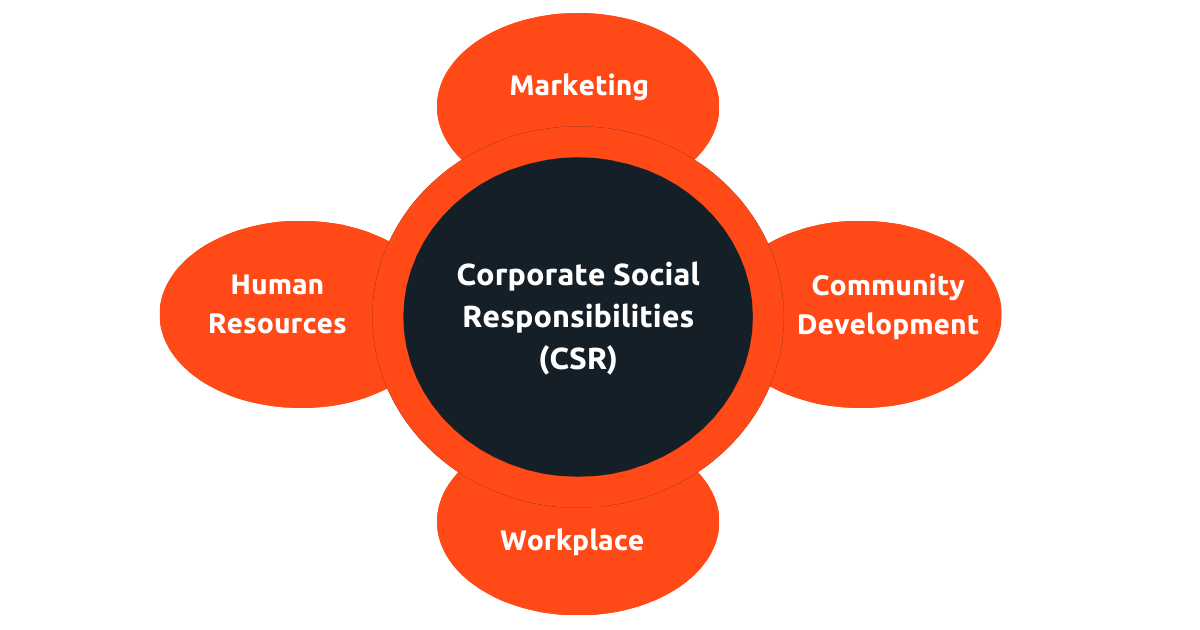In today’s fast-paced, interconnected world, the dream of creating a global brand is within reach like never before. With technological advancements and seamless communication channels, businesses of all shapes and sizes can now engage with consumers on a global scale. However, while the opportunities are vast, so are the challenges. How can you navigate this complex landscape and ensure your brand stands out amidst the competition? How do you build a brand that resonates with diverse audiences across continents and cultures? Join us as we explore the key strategies for crafting a global brand in 2024. Let’s dive in!
Top 8 Global Branding Strategies for 2024
1. Understanding the Global Landscape
Understanding the global landscape is a crucial aspect of developing a successful global branding strategy in 2024. In today’s interconnected world, businesses aiming to create an international brand must possess comprehensive knowledge of various factors such as cultural nuances, market trends, consumer behaviours, regulatory frameworks, and competitive landscapes across different regions. By thoroughly understanding the global landscape, companies can tailor their branding strategies to resonate with diverse audiences while maintaining consistency and relevance. This involves conducting thorough market research, analyzing consumer preferences, and adapting branding elements such as messaging, imagery, and product positioning to suit local tastes and preferences.

Moreover, understanding the global landscape enables brands to navigate complexities such as geopolitical tensions, economic fluctuations, and technological advancements, thereby minimizing risks and maximizing opportunities for growth and expansion on a global scale. In essence, incorporating a deep understanding of the global landscape into branding strategies empowers businesses to build strong, recognizable international brands that effectively engage with consumers worldwide while staying agile and responsive to evolving market dynamics.
2. Consistent Brand Identity
Consistency in brand identity is one of the paramount branding strategies for creating a successful international brand in 2024. In an increasingly interconnected world, where consumers are inundated with choices, a consistent brand identity serves as a beacon, guiding consumers through the clutter and fostering trust and loyalty. Maintaining consistency across all touchpoints from visual elements like logos and color schemes to messaging, tone of voice, and customer experience ensures that the brand presents a cohesive image regardless of geographic location. This consistency not only reinforces brand recognition but also builds trust and credibility among consumers, regardless of where they are in the world. A consistent brand identity also helps to streamline operations and communication internally, ensuring that employees across different regions understand and embody the brand’s values and promises. This alignment fosters a sense of unity and purpose, driving collective efforts towards achieving global brand objectives.

Moreover, in an era where digital channels play a crucial role in brand communication, consistency is key to creating a seamless and memorable online experience for consumers. By maintaining consistency across websites, social media platforms, and other digital channels, brands can enhance engagement, build relationships, and drive conversions on a global scale. By presenting a unified and cohesive brand image across diverse markets, brands can establish trust, drive loyalty, and ultimately, achieve sustainable growth and success on a global stage.
3. Localization
Localization is one of the pivotal branding strategies for crafting an international brand in 2024. In essence, it involves tailoring branding elements to suit the unique cultural, linguistic, and contextual preferences of target markets worldwide. This approach recognizes that a one-size-fits-all approach to branding often falls short in resonating with diverse global audiences. Localization extends beyond mere translation of content; it encompasses adapting messaging, imagery, product features, and even marketing strategies to align with local customs, values, and sensibilities. By doing so, brands can establish deeper connections with consumers, demonstrate cultural sensitivity, and foster a sense of authenticity and relevance in each market.

Embracing localization empowers brands to overcome barriers related to language, cultural differences, and consumer behaviours, thereby enhancing brand perception and driving engagement and loyalty among international audiences. Additionally, it allows brands to navigate regulatory requirements and market nuances effectively, positioning them for sustained success in an increasingly competitive global landscape. Ultimately, localization serves as a bridge between the global and the local, enabling brands to strike the delicate balance between maintaining a cohesive brand identity and adapting to the unique needs and preferences of diverse markets. In doing so, brands can unlock the full potential of international expansion, fostering growth, and cultivating lasting relationships with consumers worldwide.
4. Digital Presence and Social Media
Harnessing digital presence and social media is indispensable for creating a robust international brand. With the expansion of internet connectivity and the widespread use of social platforms, consumers around the globe are more connected than ever before. Thus, leveraging digital channels and social media platforms enables brands to engage with audiences on a global scale, fostering brand awareness, loyalty, and advocacy. A strong digital presence begins with a well-designed website that is not only visually appealing but also user-friendly and optimized for various devices and languages. This serves as the cornerstone of a brand’s online presence, providing a central hub where consumers can learn about products, make purchases, and interact with the brand. Social media platforms play a pivotal role in amplifying a brand’s reach and fostering meaningful connections with consumers worldwide. By crafting compelling content tailored to each platform and audience, brands can spark conversations, drive engagement, and cultivate brand ambassadors across borders. Additionally, social media offers valuable insights into consumer preferences and behaviors, enabling brands to refine their strategies and deliver more personalized experiences.

Moreover, in 2024, emerging technologies such as augmented reality (AR) and virtual reality (VR) present exciting opportunities for brands to create immersive and interactive experiences that transcend physical boundaries. By embracing these technologies, brands can differentiate themselves, captivate audiences, and leave a lasting impression in the digital realm. In essence, a strategic approach to digital presence and social media is essential for creating a successful international brand in 2024. By leveraging these channels effectively, brands can extend their reach, engage with diverse audiences, and establish a strong foothold in global markets, ultimately driving growth and fostering brand loyalty in an increasingly digital world.
5. Strategic Partnerships
Strategic partnerships serve as a powerful tool for crafting an international brand in 2024. By collaborating with other businesses, organizations, influencers, or even governments, brands can leverage complementary strengths and resources to enhance their global presence and credibility. In the international arena, strategic partnerships enable brands to access new markets, channels, and customer segments that may have otherwise been challenging to penetrate independently. Whether through distribution agreements, joint marketing campaigns, or co-branded initiatives, partnerships provide avenues for brands to amplify their reach and relevance on a global scale. Moreover, strategic partnerships can help brands tap into local expertise, cultural insights, and networks, facilitating smoother market entry and adaptation to diverse regions and consumer preferences. This not only accelerates growth but also mitigates risks associated with unfamiliar territories, regulatory hurdles, and competitive landscapes.

Furthermore, partnerships with reputable entities can enhance brand credibility and trust among consumers, particularly in markets where brand recognition may be limited. Associating with trusted partners lends legitimacy and reinforces the brand’s commitment to quality, reliability, and integrity, thereby fostering stronger connections with international audiences. Ultimately, strategic partnerships offer a strategic shortcut for brands to expand their global footprint, capitalize on emerging opportunities, and strengthen their position in the global marketplace. By forging collaborative relationships with like-minded partners, brands can unlock synergies, drive innovation, and create lasting value for themselves and their customers worldwide.
6. Customer Experience
Customer experience (CX) stands at the forefront of global branding strategies in 2024 as brands recognize its pivotal role in creating and sustaining an international brand presence. In an increasingly competitive and interconnected world, providing exceptional customer experiences transcends borders and cultures, driving brand differentiation and loyalty on a global scale. A customer-centric approach to branding entails understanding and anticipating the needs, preferences, and expectations of diverse international audiences. This requires brands to prioritize seamless, personalized interactions across all touchpoints, from pre-purchase research to post-purchase support. By delivering consistent and memorable experiences, brands can cultivate strong emotional connections with customers, fostering trust, satisfaction, and advocacy. This not only enhances brand perception but also generates positive word-of-mouth and referrals, amplifying the brand’s reach and influence across borders.

Moreover, in 2024, advancements in technology and data analytics enable brands to leverage insights to optimize and tailor customer experiences for different markets and segments. Whether through AI-driven chatbots, personalized recommendations, or omnichannel engagement strategies, brands can meet customers where they are, delivering relevant and frictionless experiences that resonate globally. Furthermore, prioritizing customer experience reinforces brand authenticity and integrity, demonstrating a genuine commitment to customer satisfaction and long-term relationships. This builds a foundation of trust and loyalty that transcends geographical boundaries, fostering brand resilience and longevity in an ever-evolving global marketplace. Placing customer experience at the core of global branding strategies in 2024 enables brands to differentiate themselves, drive engagement, and build lasting relationships with international audiences. By prioritizing seamless, personalized interactions, brands can create a competitive advantage, driving growth and success in the dynamic landscape of global business.
7. Corporate Social Responsibility (CSR)
Corporate Social Responsibility (CSR) will emerge as a crucial component of global branding strategies in 2024, as brands recognize the importance of making a positive impact beyond financial performance. CSR involves integrating social and environmental concerns into business operations and interactions with stakeholders, including employees, communities, and the environment. In today’s interconnected world, consumers increasingly expect brands to demonstrate a commitment to social and environmental causes. By aligning CSR initiatives with their core values and brand identity, companies can differentiate themselves, enhance their reputation, and build trust with consumers worldwide. CSR initiatives provide opportunities for brands to address pressing global challenges, such as climate change, poverty, and inequality, while also creating tangible benefits for communities and the environment. Whether through philanthropy, sustainability initiatives, or ethical business practices, brands can leverage CSR to drive positive change and contribute to the well-being of society.

Moreover, CSR initiatives have become a key driver of consumer loyalty and purchasing decisions, particularly among younger generations who prioritize brands that align with their values. By showcasing their CSR efforts transparently and authentically, brands can attract and retain customers, foster brand advocacy, and ultimately, drive business growth and success in the global marketplace. Furthermore, in an era of heightened social and environmental awareness, CSR can also attract and retain top talent, as employees seek purpose-driven organizations that prioritize social responsibility and ethical conduct. By engaging employees in CSR initiatives, brands can boost morale, productivity, and retention, while also strengthening their employer brand on a global scale. Incorporating CSR into global branding strategies in 2024 is essential for brands looking to create a positive impact, build trust, and drive sustainable growth in an increasingly conscious and interconnected world. By demonstrating a genuine commitment to social and environmental responsibility, brands can enhance their reputation, attract loyal customers and employees, and contribute to a better future for society and the planet.
8. Continuous Adaptation
Continuous adaptation is a cornerstone of global branding strategies in 2024, reflecting the dynamic nature of the global marketplace and the ever-evolving needs and preferences of consumers worldwide. In today’s fast-paced and interconnected world, brands must remain agile and responsive to changing trends, technologies, and market conditions to stay relevant and competitive on a global scale. This strategy involves a commitment to ongoing innovation, iteration, and refinement across all aspects of branding, including product development, marketing strategies, customer experience, and communication channels. By embracing a culture of continuous adaptation, brands can anticipate shifts in consumer behaviour, emerging market trends, and competitive landscapes, enabling them to seize opportunities and mitigate risks proactively. Moreover, continuous adaptation empowers brands to tailor their offerings and messaging to resonate with diverse audiences across different regions and cultures. Whether through localization efforts, targeted marketing campaigns, or product enhancements, brands can stay attuned to the unique needs and preferences of international markets, fostering stronger connections and loyalty among global consumers.

Furthermore, in an era characterized by rapid technological advancements and disruptive innovation, continuous adaptation is essential for brands to stay ahead of the curve and capitalize on emerging opportunities. By embracing new technologies, digital channels, and business models, brands can differentiate themselves, drive innovation, and create sustainable competitive advantages in the global marketplace. Continuous adaptation is a fundamental global branding strategy in 2024, enabling brands to navigate complexity, drive growth, and build lasting relationships with consumers worldwide. By remaining agile, innovative, and customer-focused, brands can thrive in an ever-changing landscape, positioning themselves for success in the dynamic world of global business.
# Conclusion
Creating a global brand in 2024 requires a blend of consistency, localization, digital savvy, strategic partnerships, customer-centricity, and social responsibility. By understanding the variations of different markets and embracing cultural diversity, businesses can build a strong international presence that resonates with consumers worldwide. With a well-executed branding strategy, the possibilities for global expansion are limitless.
Are you ready to craft your brand’s international journey? Let us know your unique branding strategies in the comments!





